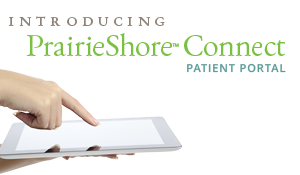Neck and Shoulder Pain
What is neck pain?
Most people will have a minor neck problem at some point in their lifetime. While our body movements typically do not cause problems, overuse, injury and just everyday wear and tear can all cause symptoms to arise over time. Neck problems and injuries most commonly occur during sports activities, work-related tasks, or projects around the home.
Neck pain may feel like a “kink,” stiffness, or severe pain. Pain may spread to the shoulders, upper back, or arms, or it may cause a headache. Neck movement may be limited, usually more to one side than the other. Neck pain refers to pain anywhere from the area at the base of the skull into the shoulders. The neck includes:
- The bones and joints of the cervical spine.
- The discs that separate the cervical vertebrae and absorb shock as you move.
- The muscles and ligaments in the neck that hold the cervical spine together.
Common causes of neck pain
Neck pain is often caused by either a strain or spasm of the neck muscles or inflammation of the neck joints. Common reasons for this type of minor injury include:
- Holding your head in a forward posture or odd position while working, watching TV, or reading.Sleeping on a pillow that is too high, too flat or doesn’t support your head, or sleeping on your stomach with your neck twisted or bent
- Spending long periods of time resting your forehead on your upright fist or arm (“thinker’s pose”).
- Stress. Tension may make the muscles that run from the back of the head across the back of the shoulder feel tight and painful.
- Work or exercise that uses your upper body and arms.
Minor neck injuries may also result from tripping, falling a short distance, or excessive twisting of the spine. Severe neck injuries may result from whiplash in a car accident, falls from significant heights, direct blows to the back or the top of the head, sports-related injuries, a penetrating injury such as a stab wound, or external pressure applied to the neck, such as strangulation.
Pain from an injury may be sudden and severe. Bruising and swelling may develop soon after the injury. Emergency care is required for a neck injury that causes damage to the spinal cord. Symptoms of a spinal cord injury include loss of movement or feeling, numbness, tingling, difficulty controlling the muscles of the arms or legs, and loss of bowel or bladder control.
Other non-injury related causes of neck pain
- Arthritis or damage to the discs of the neck can cause a pinched nerve. Neck pain caused by a pinched nerve generally affects one side of the neck and the arm on that side. Other symptoms may develop, such as numbness, tingling, or weakness in the arm or hand.
- Meningitis is a serious viral or bacterial illness that causes inflammation around the tissues of the brain and spinal cord. Symptoms come on quickly and include severe headache, stiff neck, fever, and sometimes vomiting. The neck stiffness makes it hard or impossible to touch the chin to the chest.
- The flu, which usually is not serious, can cause symptoms similar to meningitis. When neck pain is caused by flu, the neck and the rest of the body tend to ache all over, but severe neck stiffness is absent.
- Neck pain that occurs with chest pain may be caused by a serious problem with the heart, such as a heart attack.
- Stress and tension may make the muscles that run from the back of the head across the back of the shoulder (trapezius muscle) feel tight and painful. You may not be able to move your head without pain.
- Torticollis is caused by severe muscle contraction on one side of the neck, causing the head to be tilted to one side. The chin is usually rotated toward the opposite side of the neck. Torticollis may be present at birth (congenital) or caused by injury or disease.
Common causes of shoulder pain
The shoulder is a ball and socket joint with a large range of movement. Such a mobile joint tends to be more susceptible to injury. Shoulder pain can stem from one or more of the following causes:
- Strains from overexertion
- Tendonitis from overuse
- Shoulder joint instability
- Dislocation
- Collar or upper arm bone fractures
- “Frozen” shoulder
- Pinched nerves (also called radiculopathy)
Diagnosis and treatment of neck and shoulder pain
If the pain is severe or you are experiencing any symptoms related to spinal cord injury (loss of movement or feeling, numbness, tingling, difficulty controlling the muscles of the arms or legs, and loss of bowel or bladder control), seek immediate care at your nearest acute care center or emergency room.
For mild or non-urgent neck and shoulder pain, it is recommended that you first consult your family doctor. Your doctor can help you determine the proper course of treatment for your pain, depending on the location, type, and severity of the injury, as well as your age, health condition, and activities (such as work, sports, or hobbies). Treatment may include first aid measures, physical therapy, manipulative therapy (such as chiropractic or osteopathic), medicine, and in some cases surgery.
Your doctor may order several tests. X-rays can be helpful in diagnosing neck and shoulder pain. Magnetic resonance imaging (MRI) is another non-invasive procedure that can reveal the detail of neural (nerve-related) elements. Myelogram/CT scanning is sometimes used as an alternative to MRI. Electrodiagnostic studies, or electromyography (EMG), and nerve conduction velocity (NCV) — also might aid in the diagnosis of neck and shoulder pain, arm pain, numbness, and tingling.
Your doctor may also recommend prescription medications or a local corticosteroid injection in addition to home treatment for pain relief. Your doctor may also recommend physical therapy or refer you to a specialist for chronic pain. For cases in which nerve roots or the spinal cord are involved, your doctor may refer you to a surgeon.
Home treatment
Home treatment may help relieve pain, swelling, and stiffness related to minor neck and shoulder injuries.
- Apply ice and cold packs to the injured area.
- Apply ice or cold packs for 15 to 20 minutes, 3 or 4 times a day or up to once an hour for the first 24 to 48 hours. Cold decreases swelling and pain. Keep a towel between your skin and the ice to prevent frostbite. Do not fall asleep with the ice on your skin.
- Gently massage or rub the area to relieve pain and encourage blood flow. Do not massage the injured area if it causes pain.
- After 48 to 72 hours, if swelling is gone, apply heat. Use a warm pack or heating pad set on low. Some experts recommend switching back and forth between heat and cold treatments. You also can begin gentle exercise with the aid of moist heat to help restore and maintain flexibility.
- Continue with your usual daily activities unless you have severe neck and back pain. Modify or avoid any activity that makes your pain worse.
- Practice good posture. Avoid slouching or a head-forward posture.
- When sleeping, place a small support pillow under your neck, not under your head.
- If tension is contributing to your neck pain, massage may be helpful.
- Do not smoke. Smoking slows healing because it decreases blood supply and delays tissue repair.
- Try an over-the-counter medicine such as ibuprofen or acetominophen to help treat pain.
At PrairieShore™ Pain Center, our goal is to relieve your pain and improve your quality of life. If your primary physician has advised you to see a specialist for your pain, turn to us for help. To schedule your appointment, please contact us here or give us a call at (847) 883-0077.







